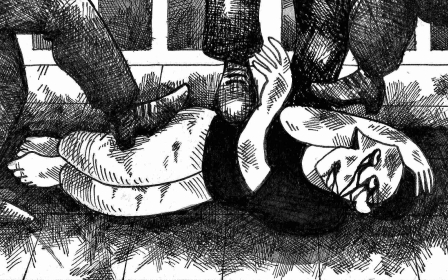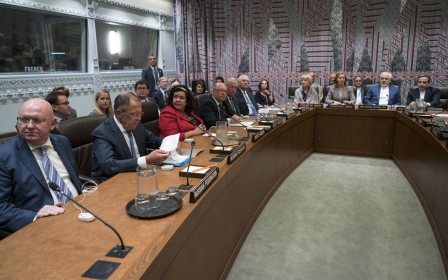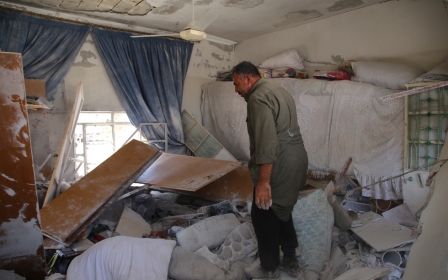Afghan children as young as 14 recruited by Iran to fight in Syria, says HRW

Afghan children as young as 14 are being recruited to fight in the war in Syria by the Iranian Revolutionary Guard, according to a report by Human Rights Watch.
The rights group says that the IRGC has recruited Afghan immigrant children living in Iran to fight inside Syria.
Many of the children who were recruited had fought in the Fatemiyoun division, an exclusively Afghan armed group supported by Iran that fights alongside Syrian government forces in Syria's civil war.
The report comes as Syrian government and Russian warplanes pound rebel-held territory inside Idlib, in northwest Syria.
Iran should immediately end the recruitment of child soldiers and bring back any Afghan children it has sent to fight in Syria
- Sarah Leah Whitson, Middle East director at HRW
Researchers from HRW said that eight children had been recruited to fight in the civil war after the organisation reviewed photographs of tombstones in Iranian cemeteries where authorities had buried combatants killed in Syria.
Iranian media reports had corroborated some of these cases and reported at least six more instances of Afghan children who died in Syria.
For two of the reported cases, researchers reviewed photographs of tombstones that indicated the individual was under the age of 18.
Family members of these deceased fighters told Iranian media that they were children who had misrepresented their age to join the Fatemiyoun division.
Earlier this year, Afghan fighters had told HRW that they saw children in training camps for Afghan forces that were being deployed to Syria.
In August, Ali, a 29-year-old Afghan, told HRW that he talked to 16- and 17-year-old child soldiers who were being trained to fight in Syria.
He told HRW that he joined the Fatemiyoun division after a recruiter approached him while he was trying to renew his residency permit at the Bureau for Aliens and Foreign Immigrants Affairs (BAFIA) office in a city outside Tehran. The Afghan said that the recruiter told him he could get his residency permit if he joined up.
Sarah Leah Whitson, Middle East director at Human Rights Watch, called on Iran to protect all children and for the Iranian authorities to "immediately" stop this practice.
"Iran should immediately end the recruitment of child soldiers and bring back any Afghan children it has sent to fight in Syria," said Whitson.
"Rather than preying on vulnerable immigrant and refugee children, the Iranian authorities should protect all children and hold those responsible for recruiting Afghan children to account."
In 2015, the Iranian interior ministry estimated that there were 2.5 million Afghans in Iran, many of them without residency papers.
HRW had previously documented cases of Afghan refugees in Iran who "volunteered" to fight in Syria in the hope of gaining legal status for their families.
While Iran officially claims that all Afghans living in Iran who join the Fatemiyoun division are volunteers, the vulnerable legal position of many Afghan children living in Iran and their fear of being deported to Afghanistan may contribute to their decision to join up.
Since 2013, Iran has supported and trained thousands of Afghans, at least some of them undocumented immigrants, as part of the Fatemiyoun division, a group that an Iranian newspaper close to the government describes as volunteer Afghan forces, to fight in Syria.
Middle East Eye propose une couverture et une analyse indépendantes et incomparables du Moyen-Orient, de l’Afrique du Nord et d’autres régions du monde. Pour en savoir plus sur la reprise de ce contenu et les frais qui s’appliquent, veuillez remplir ce formulaire [en anglais]. Pour en savoir plus sur MEE, cliquez ici [en anglais].




